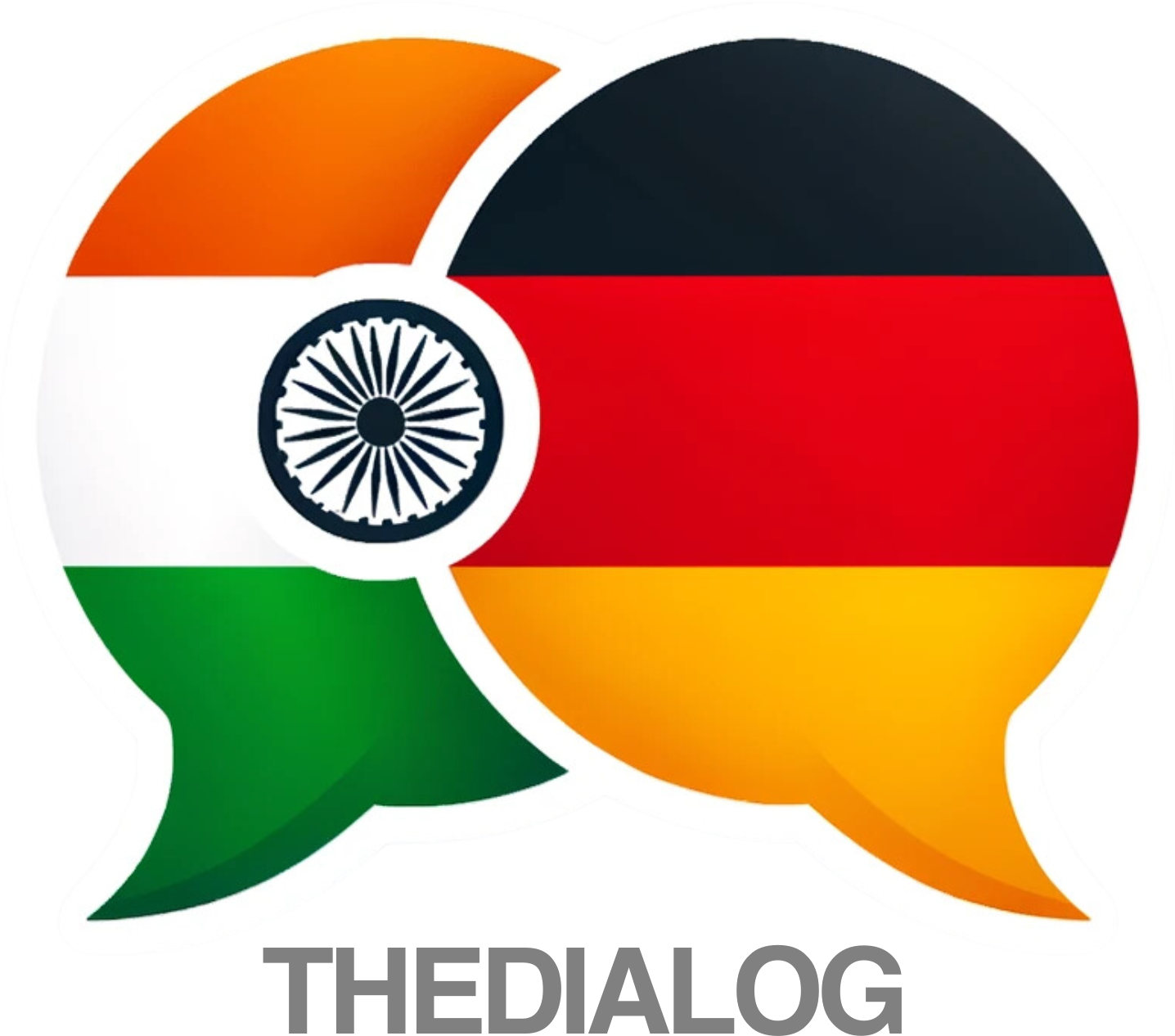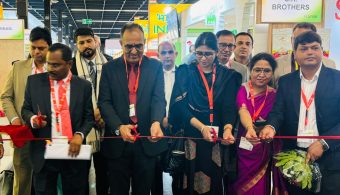India and Germany took a decisive step toward shaping the future of microelectronics and semiconductor technology at the 7th edition of the Fraunhofer Innovation and Technology Platform (FIT), held in New Delhi on 31st July, 2025. Organised by the Fraunhofer-Gesellschaft and supported by the Ministry of Electronics and Information Technology (MeitY), the day-long forum convened leaders from research, industry, and government to deepen cooperation in semiconductor R&D, advanced packaging, sensor systems, and workforce development.
Opening the forum, Ms. Anandi Iyer, Director of Fraunhofer India and a long-time advocate of Indo-German science collaboration, underscored the platform’s evolution over the last decade. “FIT is not just a conference—it is a live channel for co-creating solutions, scaling applied research, and forging industrial transformation,” she said, setting the tone for a day of deep scientific and strategic engagement.
More than a ceremonial forum, FIT 2025 functioned as a high-content knowledge exchange platform. Across keynote sessions, technical deep-dives, and roundtable discussions, experts addressed complex issues facing both countries—from heterogeneous integration and reliability engineering to the need for application-specific innovation in MEMS, CMOS, and power electronics.
“Microelectronics is not optional. It is foundational,” said Prof. Dr. Albert Heuberger, Executive Director of Fraunhofer IIS. “At Fraunhofer FMD, our focus is to convert research into scalable industrial solutions. With India, we aim to co-develop systems that meet real-world performance and efficiency demands.”
Translating Research into Semiconductor Roadmaps
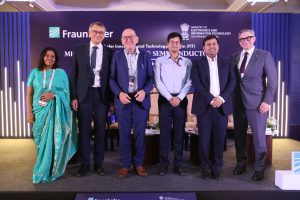
A key highlight was the unveiling of a jointly authored knowledge paper by Fraunhofer and India’s EPIC Foundation. The paper outlines a bilateral framework for collaboration in emerging domains including chip design, advanced semiconductor packaging, energy-efficient power electronics, and structured skill development. Drawing on Fraunhofer’s lab-to-market methodology and EPIC’s policy alignment, the document identifies actionable areas to strengthen design-led manufacturing ecosystems in India with German technical support.
Shri Amitesh Kumar Sinha, Additional Secretary at MeitY and CEO of the India Semiconductor Mission, noted the timeliness of such a roadmap. “The race for semiconductor leadership will not be won with just incentives—it needs collaborative IP, proven process technologies, and skilled engineers. This forum helps crystallize those pathways.”
Precision, Reliability, and Application-Driven Innovation
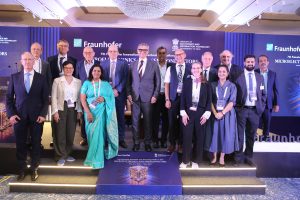
The heart of FIT 2025 lay in its back-to-back technical sessions. Over eight high-impact themes—ranging from CMOS chip design and terahertz imaging to LPWAN for IoT and virtual homologation—Fraunhofer scientists demonstrated how foundational technologies can be applied in sectors like automotive, healthcare, agriculture, and industrial automation.
For instance, Dr. Andreas Middendorf (Fraunhofer IZM) discussed how simulation-driven “virtual homologation” could dramatically improve reliability assurance for mission-critical electronics. Prof. Heuberger presented use cases of low-cost multispectral sensors with applications in agri-diagnostics and smart medicine. Dr. Michael Scholles (Fraunhofer IPMS) showcased MEMS advancements tailored for mobility and industrial robotics.
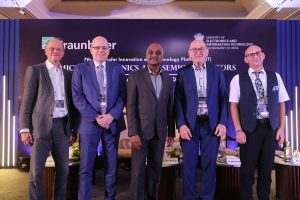
Sessions on power electronics, led by Dr. Elke Meissner (Fraunhofer IISB), and on strategic skilling by Dr. Patrick Bressler (FMD), stressed the importance of next-gen materials and cross-disciplinary learning platforms for building competitive chip ecosystems.
Vinay Shenoy, Managing Director of Infineon Technologies India, captured the industry perspective succinctly: “You can’t scale intelligence without scaling the silicon that supports it. India’s semiconductor journey will hinge on localised innovation aligned to global standards.”
India–Germany Tech Synergy in Action
German Ambassador to India, Dr. Philipp Ackermann, noted the growing interest among German companies in India’s electronics value chain. “This is not just about market access. It’s about collaborative excellence. German firms recognise India’s innovation potential, especially in domains like chip design, embedded systems, and high-efficiency computing,” he said.
Suman Bery, Vice Chairperson of NITI Aayog, added, “What unites our two countries in this effort is the shared objective of building high-trust, high-performance semiconductor value chains. FIT gives us a forum to align science with strategy.”
A Platform with Momentum
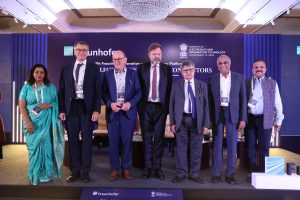
In the valedictory panel moderated by Ms. Iyer, senior industry leaders including Dr. V Veerappan (Tessolve) and Sanjeev Keskar (IESA) joined Fraunhofer heads to discuss execution models for joint IP development, scalable prototyping, and pilot production aligned with India’s electronics manufacturing clusters.
Ms. Iyer remarked, “Fraunhofer believed in India’s tech journey 18 years ago. What we see today is not just expansion, but evolution—Indian MSMEs, startups, and public agencies are innovating at speed. FIT is the crucible where ideas meet execution.”
Sustaining Collaboration, Scaling Capability
The India–Germany partnership in semiconductors and microelectronics is beginning to take shape—grounded in mutual strengths and shared urgency. India brings engineering scale and policy momentum; Germany offers deep R&D and manufacturing maturity. FIT 2025 reflected a clear understanding: collaboration, not competition, will drive long-term capability. Technological self-reliance, in this context, isn’t about isolation—it’s about building trusted, layered partnerships across the value chain.
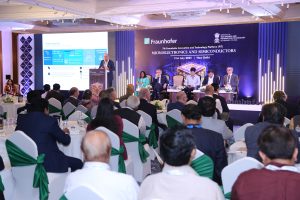 Platforms like FIT aren’t just events—they create sustained technical dialogues, enabling India and Germany to align priorities, pool infrastructure, and co-develop know-how. As India pushes to move beyond design into fabrication and advanced packaging, access to Germany’s deep experience and proven systems accelerates the process. For Germany, India represents not just scale but a fast-evolving innovation ecosystem with real-world applications and design leadership.
Platforms like FIT aren’t just events—they create sustained technical dialogues, enabling India and Germany to align priorities, pool infrastructure, and co-develop know-how. As India pushes to move beyond design into fabrication and advanced packaging, access to Germany’s deep experience and proven systems accelerates the process. For Germany, India represents not just scale but a fast-evolving innovation ecosystem with real-world applications and design leadership.
As semiconductor supply chains become more modular and regionalised, alignment must go beyond technology—it must extend to skills, standards, and execution frameworks. That’s where platforms like FIT matter most: in converting shared ambition into shared capability.
